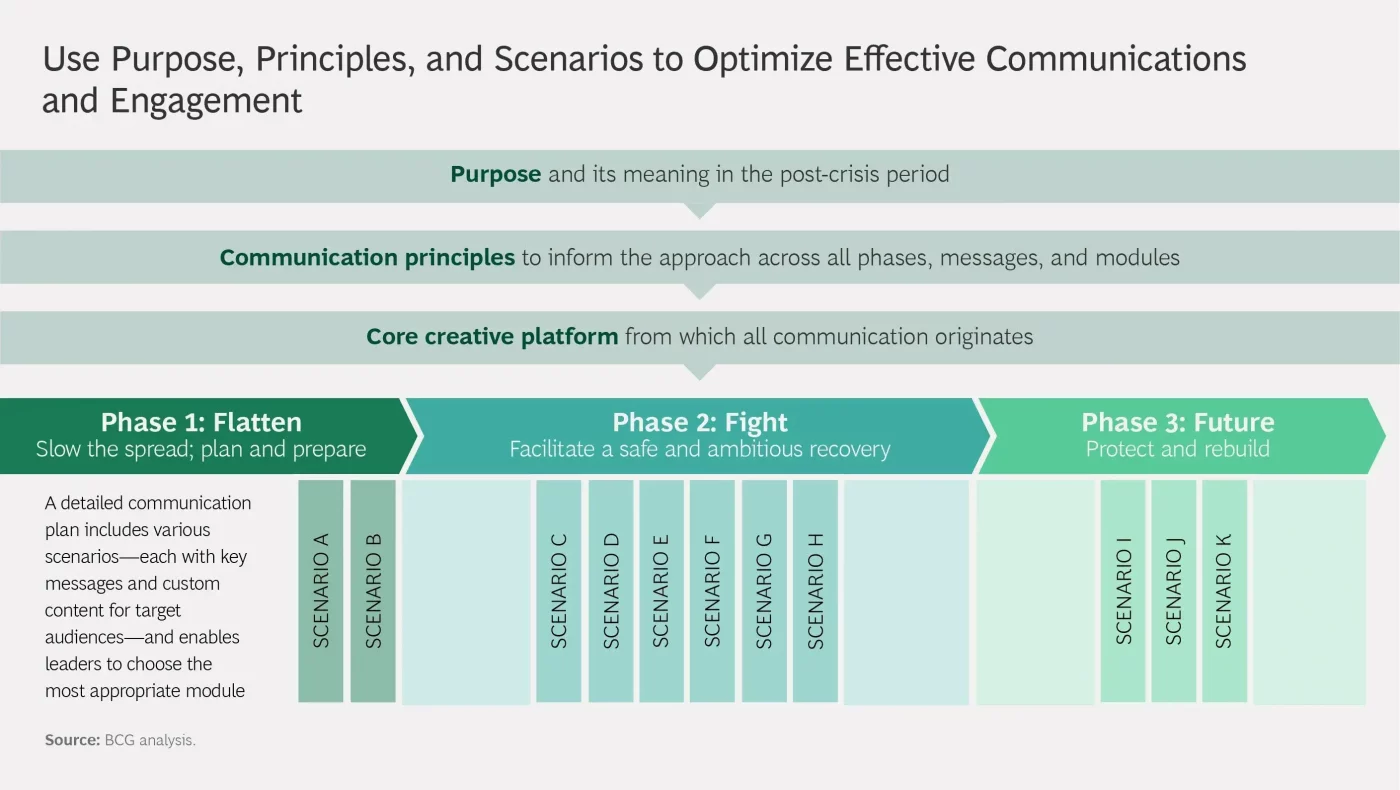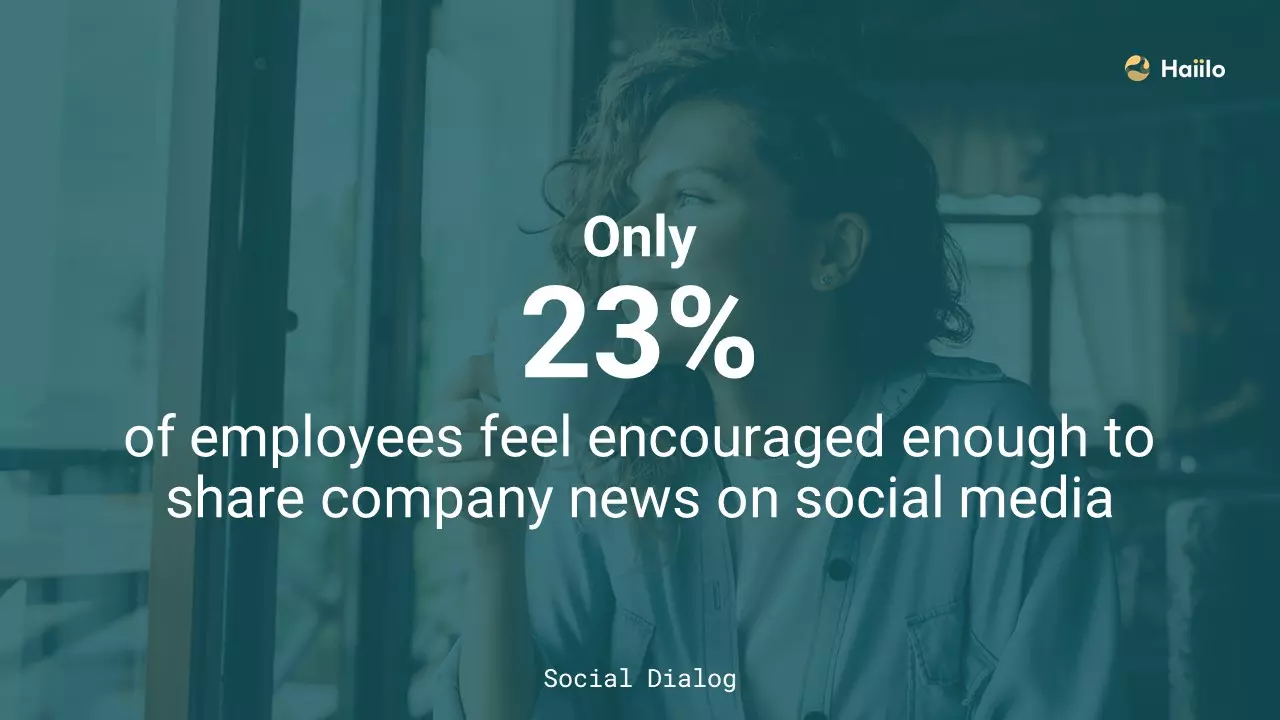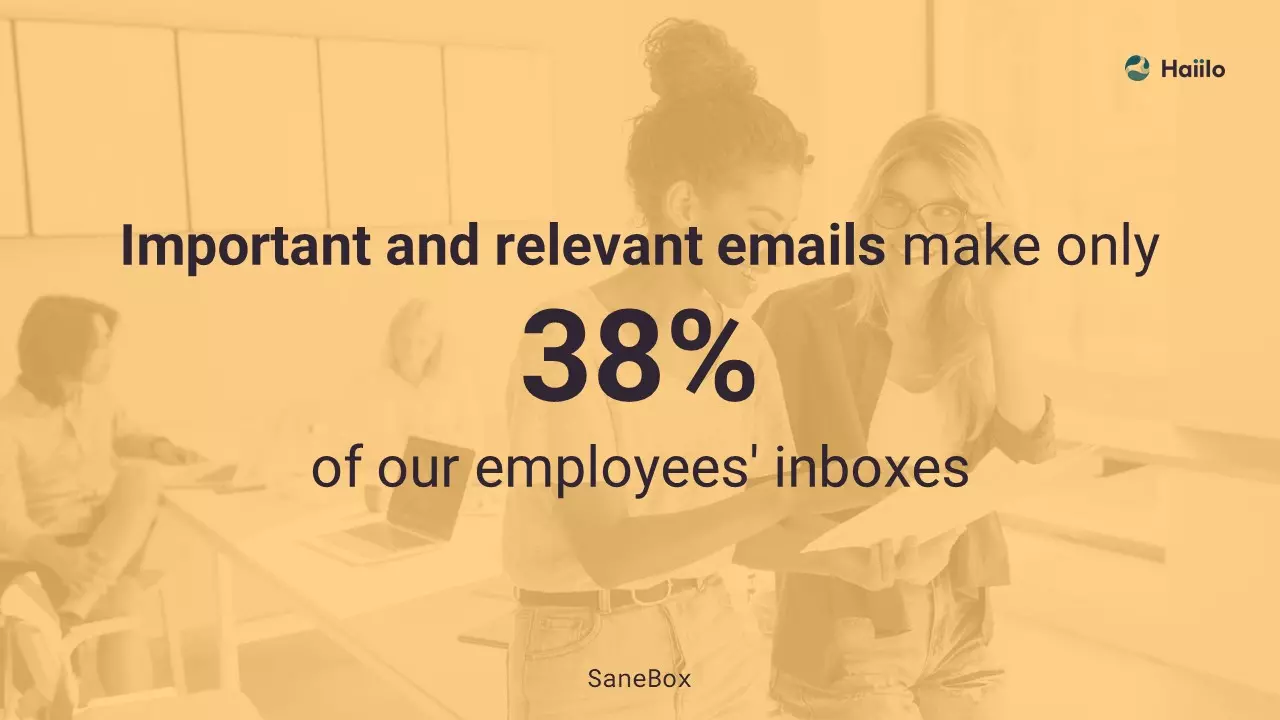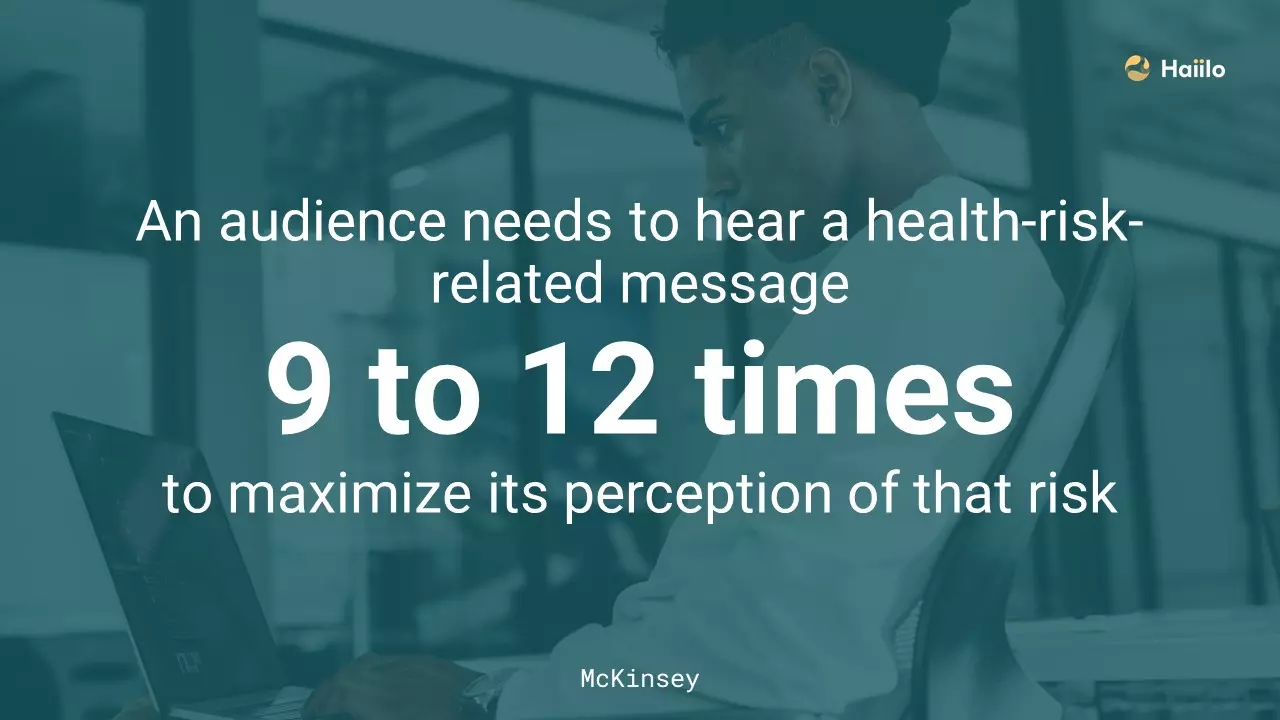Building an effective, well-crafted communication plan takes time, patience and energy. However, as communication plays a key role in shaping a positive employee experience, it is absolutely worth investing resources in building a robust internal communications plan.
What’s more, by supporting corporate strategy, the perception of IC is moving from that of a support function to that of a value-adding resource.
In this blog, we are taking a deep dive into what it takes to build a successful internal communication plan as well as the benefits of having it.
Get an internal communications platform that supports your communication plan
The Rising Importance of Having a Well-Crafted Communication Plan
Back in 2016, 87% of Internal Communications professionals said they though the demand for IC in their company would increase in the next 12 months. Since then, we have truly witnessed the increasing importance of IC in organizations.
With the emergence of the current pandemic, having a carefully prepared communication plan has become one of the most important prerequisites for driving a positive employee experience in the workplace.
📚Read on: Remote Work: 20 Ways to Engage and Connect with Your Remote Employees

Employees care about communication more than ever before. It is important for your employees, your managers and other stakeholders. Moreover, effective communication is also one of the most essential factors impacting your employees’ engagement.
📚Read on: 8 Employee Engagement Statistics You Need to Know in 2020 [INFOGRAPHIC]
One research found that over 70% of employees felt more engaged in companies where information of value, company goals, objectives, and individual / organization execution are clearly communicated.
Recently, Josh Bersin analyzed the growing importance of internal communication in the workplace due to the current situation. Josh says:
Historically, employee communications was handled by an HR manager who sent out emails, put together a portal for open enrollment, and did interviews and videos of employees at various points in their career. Now the function has been upgraded: employee communications is a mission-critical, CEO-connected effort that has to reach everyone fast, effectively, and accurately.

Because employee communications plays such a key role in the numerous interactions and touchpoints that contribute to engagement and the employee experience, we decided to take a closer look into how to create a successful communication plan in the workplace.
7 Questions to Consider When Building a Communication Plan
Before we dive deeper into how to put together an internal communications plan and strategy, let’s go over the list of questions to consider when crafting a communication strategy :
- What is the ultimate goal of your communications plan, what are you trying to achieve?
- Who are your internal audiences?
- What are the messages you want to communicate and the topics you want to address? How are you going to build your communication editorial calendar?
- Who will be responsible for crafting, reviewing and distributing your messages to the defined audiences?
- How you will share your messages and which internal communications channels will you use?
- What is the timeline for each of the communication campaigns and other collateral you are building?
- How will you measure the success of your internal communication strategy?
Also, remember that these questions should not be answered only when building your first communication plan.
Instead, your communication strategy should be regularly assessed and reviewed. Yet, only 25% of companies which have formal IC strategies review their strategy annually.
📚Read on: 11 Reasons Why Business Communication is Critical to Your Company’s Success

12 Steps to Creating a Successful Communication Plan
Internal communications professionals should prepare a communication plan that includes all the planned internal campaigns, expected outcomes, and contributions towards the overall corporate strategy.
Yet, many internal communications departments still don’t have clear communication strategies in place.
In the following section, we will go over a step-by-step guide to building a successful internal communications plan.
Step 1: Analyze your current communications strategy
Before you start building a new communication plan, it is important to assess and evaluate your existing communication strategy and performance. If you don’t understand the performance of your existing communications efforts, it is hard to make improvements.
When assessing your previous communication campaigns, consider factors of your organization that impact communication effectiveness such as the number of employees within each audience, locations, departments, functions and roles, demographics and technology.
Some of the ways to evaluate your existing communication plan include:
- Reviewing existing communication channels to understand which ones are the most effective in terms of employee readership and engagement.
- Collecting data around whether readership rates differ depending on employees’ locations, roles, departments or demographics.
- Inspecting which of the content formats are most likely to get your employees’ attention. Is it just text, images, infographics, podcasts, webinars, videos or something else?
- Using data to better understand the best times of the day/week to distribute your internal content.
- Analyzing who are your internal influencers. More specifically, investigate whose messages from your organization get the most attention and engagement.

Step 2: Define internal communicators from different departments
Even though organizations may have internal communicators from different departments in an organization, we can see a significant increase in dedicated IC teams as companies are realizing the value they can drive across the enterprise.
However, that doesn’t mean that only these teams should be responsible for creating and delivering the company’s internal content. Moreover, IC is a cross-departmental discipline. Hence, make sure that your IC teams collaborate with other departments to deliver effective company-wide communications.
Clearly define who will be responsible for creating content, reviewing, approving and distributing it to the various internal audiences.
Step 3: Get your leaders involved
When defining the different teams that will participate in delivering your communication plan, make sure to involve the leaders.
Indeed, leadership communication plays an important role in driving employees’ engagement in the workplace and shaping positive employee experience.
📚Read on: Interpersonal Communication: Definition, Importance and Must-Have Skills
Yet, 74% of IC professionals say that their CEOs spend less than half a day a week on internal communications, and only 17% of IC professionals believe that senior leaders are advocates of IC in their organizations.

Leaders need to communicate in an authentic way, they need to be more approachable than they have been traditionally, and they need to act as role models.
With the emergence of the new pandemic, leadership communication is more important than ever before.
📚Read on: What Are The Top Leadership Skills That Make a Great Leader?
In a recent article by Boston Consulting Group, this is how they explained the role of leadership communications during this current situation:
As companies map their actions over the next months, the underlying communication plans must be agile and capable of dealing with uncertainty. Leaders need cohesive, scenario-based communication and engagement strategies designed to maintain flexibility and to maximize their companies’ credibility with stakeholders through the ups and downs of rebuilding.
Also check the BCG’s template for a scenario-based leadership communication plan.

Step 4: Tie your communications plan to the strategic business goals
As the designated budgets for internal communications are growing, there will be an increasing expectation that more IC work should be planned, predicted and tied to the ultimate business goals. In other words, IC is expected to transform in the near future.
📚Read on: Change Management: Definition, Best Practices & Examples
When defining goals in your communications plan, have your workplace challenges in mind. According to many research, workplace communications have a significant impact on employees’ engagement, satisfaction, retention, productivity and experience. Hence, your goals can be aligned with those KPIs.
Here are just a few examples of SMART goals you could define in your communications plan:
- Decrease employee attrition rate from 10% to 5%
- Increase employee satisfaction from 80% to 87%
- Increase readership by 30%
- Increase content engagement (likes, comments, shares) by 20%
Today, some IC professionals are also accountable for content sharing on employees’ personal social media profiles with the goal to improve social selling and employer branding efforts.
Yet, according to a report, only 23% of employees feel encouraged enough to share company news on social media. Hence, this could also be one of your strategic communication goals.

Step 5: Define your internal employee personas and audiences
One of the most important parts of every communication plan should be to clearly define internal employee audiences. The same way marketing and sales professionals define their buyer personas, employers should define their employee personas.
By clearly defining internal audiences, organizations can create and distribute localized content that is relevant to the defined audiences, resulting in much higher readership and engagement with the content.
Within your workplaces, you probably have a multi-generational workforce, employees that work remotely while others work in offices, employees that speak different languages, wired and non-wired employees, blue and white-collar employees, employees located in Asia and the United States…
The times when all these employee groups would receive the same internal communications are dead. Remember, one size does not fit all!
📚Read on: 14 IC Experts Share Their #1 Tip to Engage a Distributed Workforce
Step 6: Define the main messages and build an internal comms editorial calendar
Based on the defined personas, outline the most important messages and talking points you need to communicate to your audiences to keep them engaged. Use facts, data and stories to support your messages.
When crafting those messages, make sure to cover the questions every employee might have:
- What – What’s the message? What does it mean? What should I know? What’s in it for me?
- Why – Why is this the right decision? Why now? Why is it important?
- Where – Where is this decision coming from? Where/what locations will it affect? Where can I get more information?
- When – When is this change happening?
- How – How was the decision made? How will it be implemented? How will communications flow internally and externally? How does it impact me?
- Who – Who made the decision? Who is involved in the charge? Who does it impact?
Once you’ve crafted those main messages, build an internal communications content calendar.
Step 7: Follow best practices for creating engaging internal content
Todays’ IC professionals are expected to have communication skills similar to content creators in marketing. Hence, they are expected to follow some of the best practices for creating interesting and engaging internal content.
People today are less attentive. According to the US National Library of Medicine, the average attention span is 8 seconds.
Your communication plan should, therefore, follow some of the marketing best practices in order to increase the chances of getting employees’ attention.
Here are some of the best content creation practices to follow:
- Include the WIIFM factor — every message should include the answer to this fundamental question employees subconsciously ask themselves.
- Keep it clear and simple — Make it to the point and easily understandable to your defined audiences.
- Be credible — Use facts, figures, real-life examples and trustworthy sources.
- Create an emotional connection — People remember things that tap into their emotions. Whether it’s something funny that makes them laugh or causes them to reflect.
- Tell stories — Make internal communications about storytelling. Such narratives can influence employees’ feelings and behaviors.
- Make it easy to navigate and consume — Don’t expect your employees to read 2,000-word documents. Instead, organize the content so that employees can get to the most important and relevant bits quickly and easily.
- Experiment with media — Include images, infographics and videos in your content. Research shows that people remember only 10% of information presented verbally as opposed to 65% if that same information is accompanied by a picture.

- Include a call-to-action — Every piece of content should have its ultimate goal. Some of the CTAs in your internal content may include: read more, join the webinar, take a survey, ask a question, give feedback… depending on what you are trying to achieve.
Step 8: Define the best communication channels to reach your audience
This is another crucial step in creating a communication plan. Communicating through the appropriate channels is critical to the success of internal communications.
Today more than ever, companies are communicating new information on safety protocols, organizational changes, tips for working from home and staying productive on a daily basis.
While emails and web portals had been considered as effective channels to deliver such messages, this is not the case any more.

Organizations can’t afford any more for the important information to get lost, and they have to find ways to eliminate information overload in the workplace.
This is the reason why many organizations are now switching to the more modern, mobile-first, employee communications solutions that enable them to consolidate all their existing communication channels into a single platform.
Defining the right communication channels in the workplace is also crucial for creating a positive digital employee experience. Moreover, IC professionals say that one of the biggest future IC challenges will be
“recreating the digital multi-channel experience that employees are used to in the rest of their lives within a corporate network”.
Step 9: Repeat, repeat, repeat
Many internal communicators underestimate the need for repeating and reinforcing internal messages. During this crisis, repetition becomes even more critical.
One study showed that an audience needs to hear a health-risk-related message 9 to 21 times to maximize its perception of that risk.

Fortunately, employee appetite for regular, trusted information from employers during COVID-19 is high. In one study, 63% employees asked for daily updates and 20% wanted communications several times a day. Therefore, organizations need to establish a steady communication cadence and repeat the same messages regularly.
Step 10: Measure the success of your communication campaigns
Measuring the effectiveness of your communication plan and strategy is the only way to make data-driven decisions for improvement. Yet, the main barrier to effective measurement of IC is not having the right tools or not knowing what to measure.
Hence, when choosing an internal communications solution for your organization, make sure that it can provide data around:
- Content readership such data will help you understand to what extent your employees are really reading the content you deliver
- Content popularity and engagement. Metrics such as click-through-rates, comments, likes and shares can help you better understand what kind of content best resonates with the previously defined internal audiences and, therefore, help you deliver more engaging content in the future.
- Engagement based on demographics, generations, locations, departments, roles and other workforce characteristics. Slicing and dicing such data can help you better personalize and localize your internal content.
- Devices used in your organizations. Do your employees consume internal content via their smartphones, desktops or tablets?
- Surveys and pools. If you are sending surveys to your employees, make sure that you have access to data around how your employees engage with them.
Step 11: Foster organizational dialogue and encourage employees’ share of voice
Your internal communication plan should be created in a way that fosters two-way workplace communications. Rather than just informing employees via email about a new policy, organizational change or a new initiative, encourage them to raise their concerns and questions.
One of the main strategic goals of your communication plan should be to bring people together and make them feel involved.

Now that your employees may feel stressed and are physically separated, creating those virtual dialogues is critical for improving your employees’ wellbeing and morale.
📚 Read on: 17 Ways to Improve Employee Experience During COVID-19
Step 12: Ensure that the right tools and technology are used
Lack of the right IC technology is one of the biggest success blockers for internal communications professionals. Moreover, according to the earlier mentioned research with IC professionals,
“Lack of investment in tools and technology to improve the IC function further”
was listed as their top challenge. Another challenge mentioned was
“reaching mobile/flexible workers”.
As workplaces are getting more and more dispersed due to the current pandemic and the remote work, implementing solutions that support such working environments has become crucial.
Modern, intuitive, user-friendly, integrated and mobile-first employee communications platforms are what most IC professionals are looking for today.
The Importance of Having a Clear Communication Plan
By supporting corporate strategy, the perception of IC is moving from that of a support function to that of a value-added, strategic business partner. IC is getting more and more involved in all the decision-making process related to corporate communications.
This is not surprising as the importance of having effective communication plan is constantly in its rise. More specifically, proper communication plans help organizations to:
- Achieve organizational alignment by communicating company’s mission, vision and values.
- Improve employee engagement and experience by delivering authentic and inspiring messages that resonate with the internal audiences
- Enhance business development by informing people about what is happening across the organization. Communicate successes, highlight challenges and keep employees informed about the latest industry news.
- Ensure effective change management by communicating the benefits and the impact of the change while eliminating employees’ resistance and fear.
- Ensure effective crisis management by making communication more agile and delivering the right messages to the right employees at the right time.
- Keep employees informed about new hires, promotions, diversity and inclusion initiatives, policies, procedures, rules and regulations while avoiding information overload.
- Drive higher employee productivity by ensuring that employees don’t waste their time on search for information and documents they need to do their jobs.
- Improve team and cross-functional collaboration by providing intuitive and mobile-first communication channels.
- Eliminate silos by driving open, transparent, honest and two-way communications in the workplace.
- Keep remote and non-wired workers connected by ensuring easy communication no matter where they are located.
The Role of Technology in Implementing a Successful Communication Plan
Implementing all the above mentioned communication plan steps is impossible without the right technology.
As the role of internal communications in the workplace is rising, so is advancing the technology that comms professionals use to keep up with their new responsibilities.
In the past few years, employee communications technology has been developing rapidly. Moreover, emails that used to be considered as the main solutions for internal comms, are now just a possible workplace communication channel.
Today, when information overload is in its rise, organizations are looking for more integrated, all-in-one communications platforms that enable them to streamline their communication efforts.
When asked what their biggest challenge was, Internal Communications professionals answered with 64% as the sheer volume of communications flowing through the organization. This is not so shocking as the IC ecosystem is becoming extremely complex, hard to understand and even harder to navigate.

While traditional communication technology has lots of mass communication features and capabilities, it doesn’t allow personalized, segmented, relevant and targeted communications in the workplace. As a consequence, the content gets very little attention from employees.
Last but not least, newer workplace communications solutions are much better in providing valuable and insightful data with which IC departments are much more likely to create, implement and manage effective communication plans.










